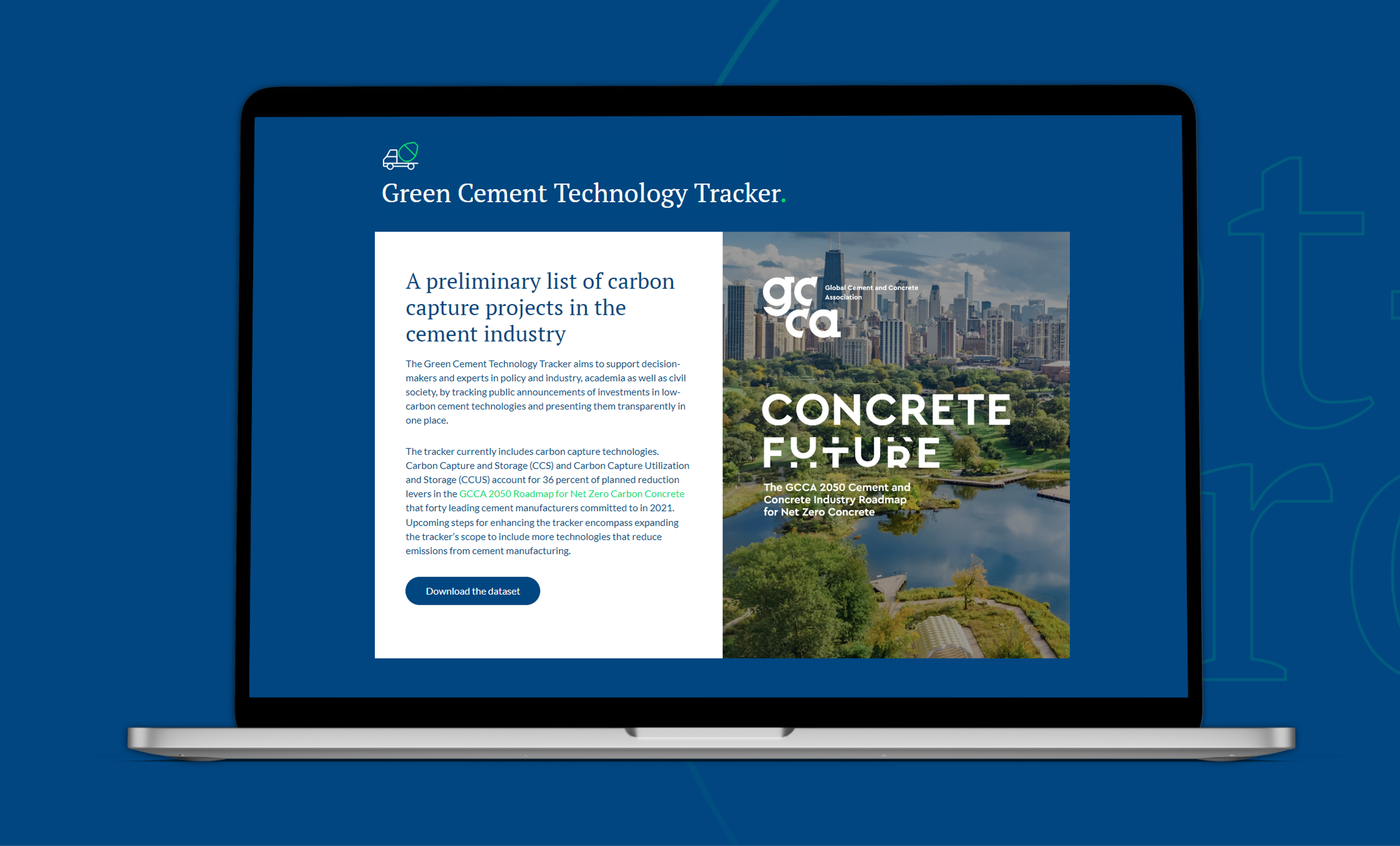Q&A – Green Cement Technology Tracker.
The Green Cement Technology Tracker tracks public announcements of low-carbon cement investments aligned to corporate climate goals consistent with the Paris Agreement. The tool is developed jointly by the Global Cement & Concrete Association and the Leadership Group for Industry Transition (LeadIT), in collaboration with the UN Climate Change High-Level Champions.

Our goal is to provide comprehensive tracking of public announcements of investments in low-carbon cement technologies.
Per Andersson
Head of LeadIT Secretariat
What is the Green Cement Technology Tracker?
The Green Cement Technology Tracker, a collaboration between Leadership Group for Industry Transition (LeadIT) and the Global Cement and Concrete Association (GCCA), tracks public announcements of low-carbon cement investments aligned with corporate climate goals consistent with the Paris Agreement. Aimed at accelerating technology adoption and global decarbonization, the tool seeks to support the cement industry in meeting its commitments and progressing towards net-zero emissions. Regular updates engage stakeholders such as producers, researchers, policymakers, and investors to ensure data relevance.
Why a tracker?
A tracker, such as the Green Cement Technology Tracker, is critical due to its role in providing data and insights that strengthen accountability and monitor the progress of the cement sector. This information aids better decision-making and ensures that the industry’s commitments, as set out in programmes such as the GCCA 2050 Roadmap for net zero concrete, can be monitored.
What low-carbon cement investments are included in the database?
The database currently tracks public announcements of investments in Carbon Capture and Storage (CCS), Carbon Capture and Utilisation (CCU), and Carbon Capture Utilisation and Storage (CCUS). Carbon capture technologies account for 36 percent of planned carbon dioxide (CO2) emission reduction levers in the GCCA’s Concrete Future 2050 Net Zero Roadmap, which forty cement manufacturers committed to in 2021. The Roadmap aims to deploy carbon capture in 10 plants by 2030 and capture 1370 metric tons of CO2 by 2050. These ambitious goals underline the need for a progress tracker for technologies that can reduce emissions in the cement industry. Several approaches are being developed by the industry for Carbon Capture. More detailed information can be found on the GCCA website.
Who is it for?
The Green Cement Technology Tracker supports decision-makers in policy, industry, academia, and civil society to track global decarbonization efforts in the cement sector. It details new technology implementation and its impact, enabling identification of areas for supportive policies.
The tracker also enhances market transparency by showing technology penetration and commercial viability, offering insights into industry trends and potential collaborations, and facilitating best practice through a comprehensive database of project announcements.
The tracker will follow the progress of the GCCA 2050 Roadmap to Net-Zero Concrete and the commitments of the industry.
What plans do you have to grow and improve the tracker?
LeadIT plans to regularly update the tracker and dataset in collaboration with the GCCA, staying current with industry news and cement production breakthroughs. This involves engaging stakeholders such as producers, researchers, policymakers, and investors to enrich the tracker’s data. Upcoming steps for enhancing the tracker encompass data analysis and expanding the tracker’s scope to include other technologies designed to reduce emissions from cement manufacturing.
We believe that the combined expertise, resources, and networks of LeadIT and GCCA position us to develop a reliable Green Cement Technology Tracker. Joint efforts can accelerate technology adoption and contribute to global decarbonization. Unique to cement production, ‘process emissions’ contribute significantly to CO2 emissions.
Fact Box
The Green Cement Technology Tracker tracks public announcements of low-carbon cement investments aligned to corporate climate goals consistent with the Paris Agreement. The tool is developed jointly by the Global Cement & Concrete Association and the Leadership Group for Industry Transition (LeadIT), in collaboration with the UN Climate Change High-Level Champions. Aimed at accelerating technology adoption and global decarbonization, the tool seeks to support the cement industry to meet its commitments, progress towards net-zero emissions. Regular updates engage stakeholders like producers, researchers, policymakers, and investors to ensure data relevance.
7%
is about the share of cement and concrete production in global carbon emissions.
